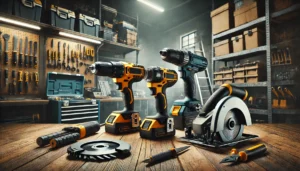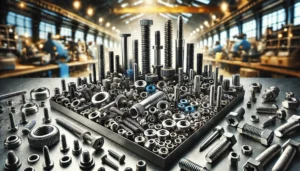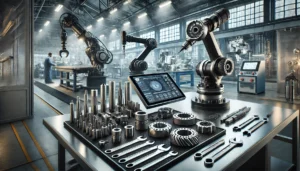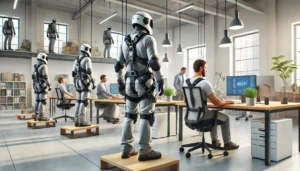Calibration is a measurement comparison technique performed on measuring devices to ensure that they are precise which allows the user to rely on its readings. Calibration compares what an instrument is reading against what it was supposed to read in the first place and makes corrections where necessary, guaranteeing accurate measurements regardless of the situation.
Defining Calibration
In simple words, calibration involves comparing the output of a measuring instrument to a reference standard of known accuracy under specified conditions. This comparison determines whether the instrument’s readings are questionable and outside the limits. If problems emerge, then the instrument’s output can be adjusted in an acceptable way. For all continuous time period measurements, accuracy is synonymous with self consistency and is a bargaining factor hence the process of adjustments has to be done.
The Importance of Calibration
Regular calibration of measuring instruments is vital for several reasons:
- Accuracy Assurance: Instruments will work within a specific range of tolerable limits, therefore the readings obtained have no choice but to be accurate, and for most instrumentations, this is ideal.
- Compliance with Standards: There are a lot of industries which are regulated and governed by laws that oblige them to periodically calibrate the apparatus and keep regulations on them.
- Traceability: There is no doubt that this proves and establishes the connection of the instrument to an international or national standard, and therefore assures traceability of the measurement.
- Cost Efficiency: When a technician discovers and resolves measurement conflicts early, calibration can help reduce expensive rework, product assemblies needed to be scrapped, and product recalls.
Steps in the Calibration Procedure
Calibration processes normally include the following steps:
- Instrument Inspection: Look for cracks on the device that might have occurred during the last usage or alterations that would have an impact on its functionality.
- Selection of Calibration Standards: Determine and set references that are linked to national standards and have tighter accuracy limits than the device being calibrated.
- Environmental Control: Ensure that the calibration is performed under controlled environmental conditions, as factors like temperature and humidity can influence measurements.
- Calibration Procedure: Employ a written method along which the device will be compared to the reference standards at multiple points within the device’s limits and along various ranges.
- Adjustment: Where there are gaps between the reference and tested standard, modification is required for the tested standard to read the same as the reference.
- Documentation: All data must be recorded during calibration including, but not limited to, instrument serial number, calibration day, internal and external conditions, and standards that have been calibrated.
- Labeling: After calibration, remove the sticker showing the last date of calibration and stick a new one indicating the date of calibration and the expected due date.
Frequency of Calibration
Calibration is carried out depending on the following:
- Manufacturer’s Recommendations: Follow the instrument manufacturer’s guidelines for calibration intervals.
- Usage Intensity: In most cases, instruments that are used on a regular basis are known to require calibration more frequently because improper functioning of instruments might affect major applications.
- Environmental Conditions: Harsh environments can cause instruments to drift more quickly, necessitating more frequent calibration.
- Historical Data: Reviewing past calibration records can help determine appropriate intervals based on the instrument’s stability over time.
Types of Calibration
Calibration can be categorized based on the nature of the instrument and the measurement parameters:
- Mechanical Calibration: Includes parts such as micrometers and gauges. This Category tools where measuring and engraving parts of the machine is performed.
- Electrical Calibration: Encompasses instruments used to measure a range of electrical quantities such as current, voltage and resistance.
- Temperature Calibration: Can pertain to thermometers or thermometers fitted with sensors to measure wide temperature ranges.
- Pressure Calibration: Includes devices like pressure sensors and gauges.
Challenges in Calibration
However, there are challenges that come with calibration and these are some of them:
- Resource Intensive: As stated, sophisticated instruments and specialized personnel need to be employed when performing calibration.
- Downtime: Instruments can be taken out of service when the instruments are being calibrated eliminating interference with operations.
- Environmental Sensitivity: Maintaining controlled conditions during calibration can be challenging but is necessary for accurate results.
Best Practices for Effective Calibration
To ensure effective calibration, consider the following best practices:
- Develop a Calibration Schedule: For successful calibration to take place, establish regular intervals with respect to the work level needed to be carried out as mentioned above.
- Use Qualified Personnel: Ensure that calibration is performed by trained and competent personnel.
- Maintain Calibration Records: All calibration records must be kept to substantiate the appropriate functioning of the equipment over a specified period and compliance during audits.
- Implement a Quality Management System: Calibration shall be part of a quality management system to guarantee proper coordination and continuous improvement in quality.
Conclusion
Due to the complexity of measuring instruments, proper accuracy and reliability can only be obtained through systematic calibration. This involves rigorous processes that include inspecting setup and internal calibration. Organizations that are proficient in these activities will produce reliable measurements and preserve the set standards of practice.










